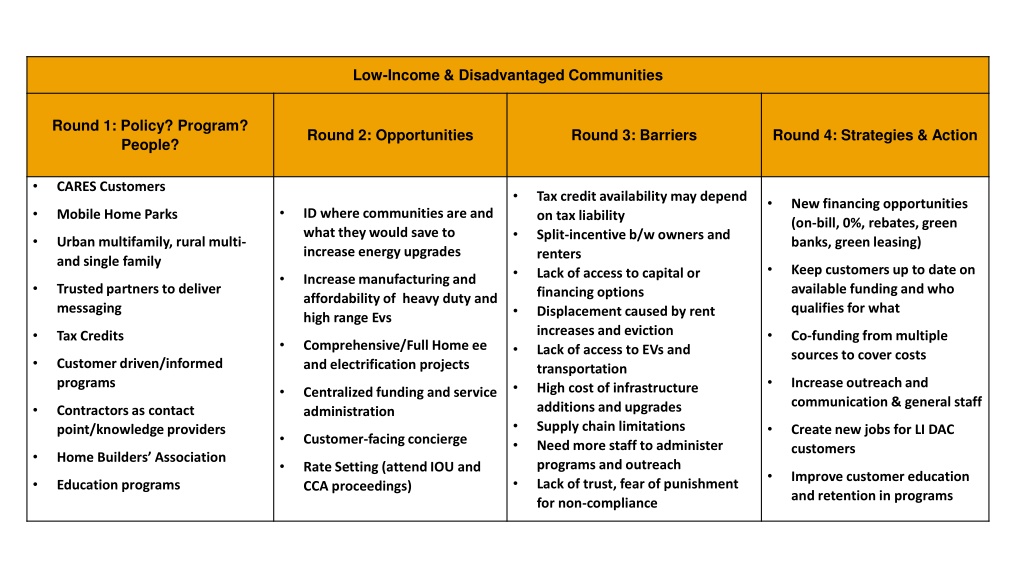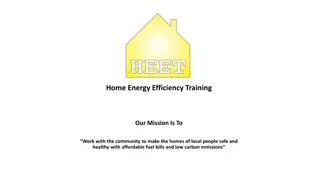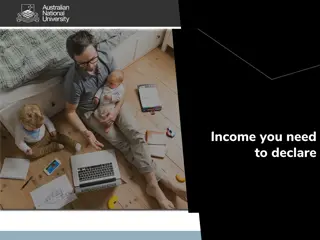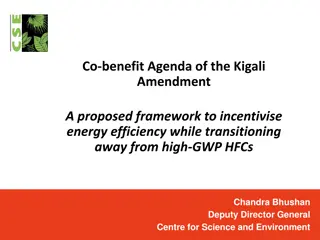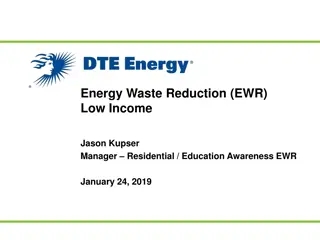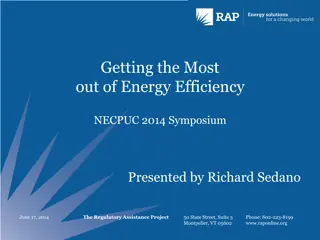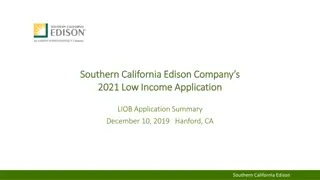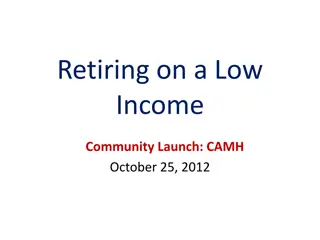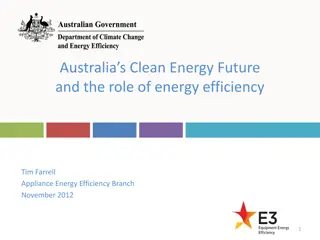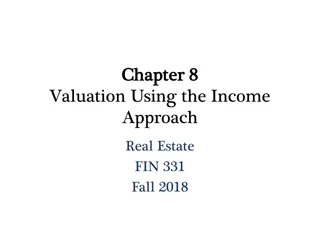Energy Efficiency and Support for Low-Income Communities
The discussion highlights challenges and strategies for implementing energy efficiency programs in low-income and disadvantaged communities. It addresses barriers like lack of access to capital, displacement, and mistrust, while proposing solutions such as new financing opportunities, customer-driven programs, and workforce development. The aim is to increase energy upgrades and affordability, focusing on policy, programs, and community involvement.
Download Presentation

Please find below an Image/Link to download the presentation.
The content on the website is provided AS IS for your information and personal use only. It may not be sold, licensed, or shared on other websites without obtaining consent from the author.If you encounter any issues during the download, it is possible that the publisher has removed the file from their server.
You are allowed to download the files provided on this website for personal or commercial use, subject to the condition that they are used lawfully. All files are the property of their respective owners.
The content on the website is provided AS IS for your information and personal use only. It may not be sold, licensed, or shared on other websites without obtaining consent from the author.
E N D
Presentation Transcript
Low-Income & Disadvantaged Communities Round 1: Policy? Program? People? Round 2: Opportunities Round 3: Barriers Round 4: Strategies & Action CARES Customers Tax credit availability may depend on tax liability Split-incentive b/w owners and renters Lack of access to capital or financing options Displacement caused by rent increases and eviction Lack of access to EVs and transportation High cost of infrastructure additions and upgrades Supply chain limitations Need more staff to administer programs and outreach Lack of trust, fear of punishment for non-compliance New financing opportunities (on-bill, 0%, rebates, green banks, green leasing) ID where communities are and what they would save to increase energy upgrades Mobile Home Parks Urban multifamily, rural multi- and single family Keep customers up to date on available funding and who qualifies for what Increase manufacturing and affordability of heavy duty and high range Evs Trusted partners to deliver messaging Co-funding from multiple sources to cover costs Tax Credits Comprehensive/Full Home ee and electrification projects Customer driven/informed programs Increase outreach and communication & general staff Centralized funding and service administration Contractors as contact point/knowledge providers Create new jobs for LI DAC customers Customer-facing concierge Home Builders Association Rate Setting (attend IOU and CCA proceedings) Improve customer education and retention in programs Education programs
Energy Efficiency Round 1: Policy? Program? People? Round 2: Opportunities Round 3: Barriers Round 4: Strategies & Action Incentivize contractors to encourage multiple ee actions Program requirements (language barriers, navigation, order of operations) Complexity of maximizing ee projects EE is usually phased in EE shouldn t be standalone Permitting Every project is different Contractor knowledge Legacy ee programs Lack of consistency in approach Prioritize building sectors by opportunity Policies to mandate action Time of Sale upgrades Workforce Permit training/streamlining Provide minimum efficiency testing to customers Permitting Workforce development (contractor education, training, certification assistance) Rental housing Require energy audits prior to solar install Consumer education New local level policies Disadvantaged/Hard to Reach Fix rate schedules Education campaigns Building energy coaches + ROI tool Leverage champions
Greenhouse Gas Reduction Round 1: Policy? Program? People? Round 2: Opportunities Round 3: Barriers Round 4: Strategies & Action Reach codes Bilingual program materials Referral networks via CBOs, healthcare & faith-based orgs Samples of completed forms and how to complete paperwork Save people $$$ Residential sector is more complex and need additional support Programs that are inclusive of who is at the table and in the field Simplifying messaging Eligibility evaluations Supply chain issues Different utility providers across territory Manufacturers shape contractor decisions Grants Communicating to utility customers on bills All building types Increased and improved communication with simple messaging AEA Regional Handholding 3C-REN Aggregation & research Concierge service Central Coast Community Energy Creating regional jobs Utilize TECH All-electric utility rates Free energy audits to qualifying residents
Rural Hard to Reach Customers Round 1: Policy? Program? People? Round 2: Opportunities Round 3: Barriers Round 4: Strategies & Action County governments Marketing, education, and outreach for rural by rural Propane switching Agricultural sector/workforce Lower costs via more energy efficiency Knowledge gap Regional affordability Rural transit networks Form a Rural REN Rural homeowners Rebates CCAs & IOUs Communicating job opportunities Rural organizations (eg Promotores)
